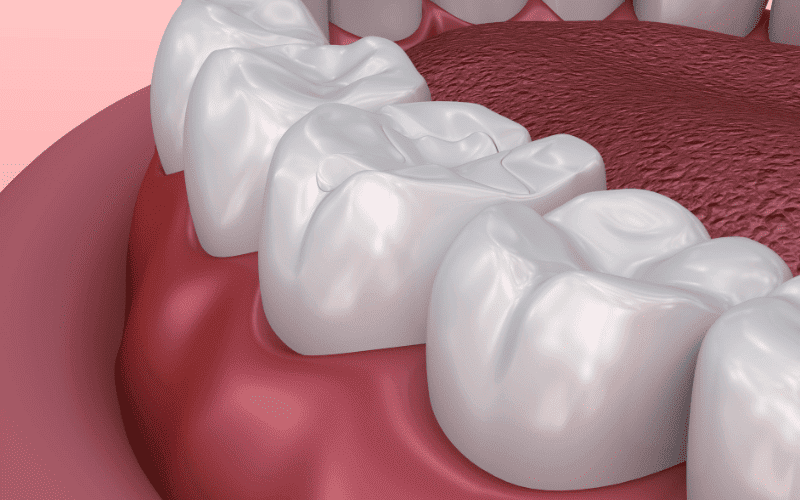

Tooth decay sneaks up on you when you least expect it. You might brush and floss regularly, but that tiny twinge in your tooth could signal the start of a cavity. Ignoring it only makes things worse, leading to pain and potentially more invasive treatments. But here’s the good news: dental fillings can stop decay in its tracks before it turns into a bigger problem.
When you catch cavities early, dental fillings provide a quick and effective solution. They not only repair the damage but also protect your tooth from future decay. Understanding how fillings work can empower you to take control of your oral health. Whether you’re dealing with a small cavity or just curious about prevention, this blog will guide you through how dental fillings help preserve your smile and keep your teeth strong.
What Are Dental Fillings?
Dental fillings are materials used to restore teeth damaged by cavities or decay. When tooth decay creates a cavity, it weakens the tooth structure, making it vulnerable to further damage. Dental fillings fill these cavities, restoring the tooth’s shape, function, and strength.
Different types of fillings are available, each with its benefits:
- Amalgam Fillings: Made from a combination of metals, these are durable and often used in back teeth.
- Composite Fillings: Tooth-colored and blend seamlessly with natural teeth, ideal for visible areas.
- Gold Fillings: Highly durable but more expensive, often chosen for their longevity.
- Ceramic Fillings: Made from porcelain, they are resistant to staining and mimic natural tooth color.
By understanding the purpose and types of fillings, you can make informed decisions about your dental care, ensuring your teeth remain strong and healthy.
How Fillings Stop Decay in Its Tracks?
The main purpose of dental fillings is to stop tooth decay from progressing. After removing the decayed portion, the cavity is filled to prevent bacteria from entering. This is crucial because even a small cavity can worsen if left untreated.
Here’s how fillings protect your teeth:
- Sealing the Cavity: The filling creates a barrier that blocks bacteria from entering and causing further decay.
- Restoring Strength: Fillings restore the tooth’s strength, making it more resistant to fractures or damage.
- Preventing Infection: By filling the cavity, you reduce the risk of infection spreading to other parts of the tooth or gums.
Filling a cavity promptly not only restores the tooth’s function but also preserves its overall integrity, ensuring that it can withstand daily activities like chewing without further issues.
The Role of Fillings in Preventing Future Cavities
Fillings not only repair existing cavities but also help prevent future ones. Once a cavity is filled, the tooth’s surface becomes smooth, making it easier to clean. This reduces the chances of plaque buildup, which is a primary cause of cavities.
Fillings help in several ways:
- Maintaining Oral Hygiene: A smooth, filled surface is easier to brush and floss, reducing plaque accumulation.
- Preserving Tooth Alignment: Untreated cavities can lead to tooth shifting or misalignment, which can cause more cavities.
- Reducing Sensitivity: Fillings protect exposed tooth surfaces, reducing sensitivity to hot or cold foods.
By preventing future decay, fillings contribute to long-term oral health, keeping your smile bright and healthy.
What to Expect During the Filling Procedure?
Understanding the filling procedure can ease any anxiety you might have. The process is straightforward and usually takes less than an hour.
Here’s what you can expect:
- Numbing the Area: Your dentist will numb the area around the affected tooth to ensure you feel no discomfort during the procedure.
- Removing Decay: The decayed part of the tooth is carefully removed, leaving a clean cavity ready for the filling.
- Placing the Filling: The filling material is applied in layers, with each layer hardened using a special light for composite fillings.
- Shaping and Polishing: The dentist shapes the filling to match your bite and polishes it to a smooth finish.
After the procedure, you can resume normal activities, but it’s best to avoid eating until the numbness wears off.
How Long Do Fillings Last?
The longevity of a dental filling depends on several factors, including the material used and your oral hygiene habits. Generally, fillings can last between five and fifteen years.
Here’s a breakdown of different filling types:
- Amalgam Fillings: Known for their durability, these can last over ten years with proper care.
- Composite Fillings: While aesthetically pleasing, they may need replacement sooner, typically lasting five to seven years.
- Gold Fillings: Highly durable and can last for decades, but they are more expensive.
- Ceramic Fillings: These are resistant to stains and last longer than composites.
Dental fillings in Metuchen are particularly durable when paired with a good oral hygiene routine. Regular dental check-ups help monitor your fillings, ensuring they stay in good condition.
How to Care for Your Fillings?
Caring for your dental fillings is essential to ensure their longevity and maintain oral health. Here are some tips to keep your fillings in top condition:
- Brush and Floss Daily: Maintain a regular brushing and flossing routine to prevent plaque buildup around your fillings.
- Avoid Hard Foods: Refrain from biting down on hard objects like ice or pen caps, which can crack or dislodge your fillings.
- Use a Mouthguard: If you grind your teeth at night, consider using a mouthguard to protect your fillings from wear.
- Regular Dental Check-Ups: Visit your dentist regularly to monitor the condition of your fillings and address any potential issues early.
Dental fillings play a crucial role in preserving your oral health by halting tooth decay and preventing further damage. By understanding the benefits and proper care of fillings, you can maintain a strong, healthy smile. Regular dental visits and good oral hygiene ensure that your fillings last longer and continue to protect your teeth from future decay. If you suspect you need a filling or have concerns about existing ones, don’t hesitate to consult your dentist for personalized advice and care.


